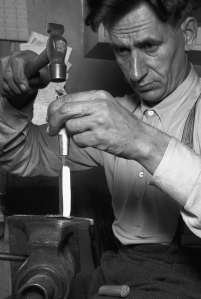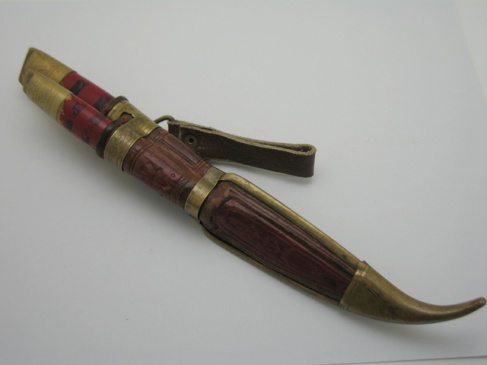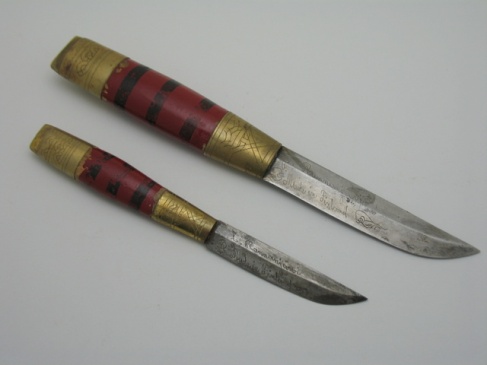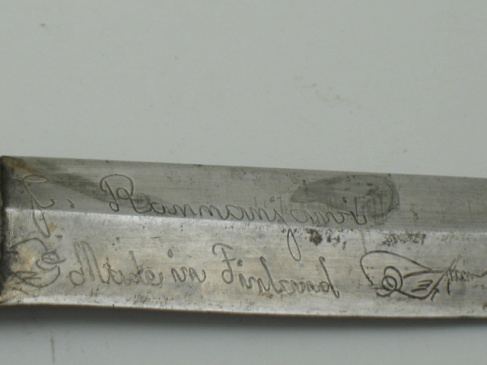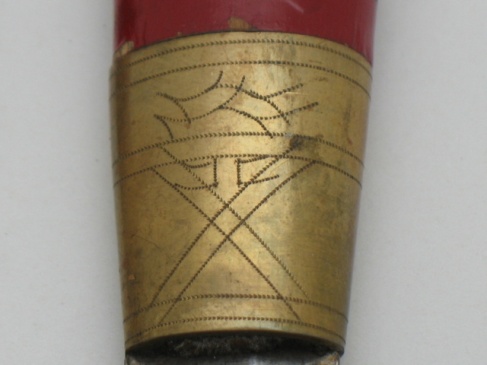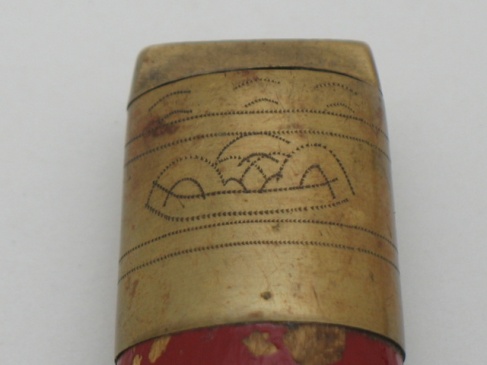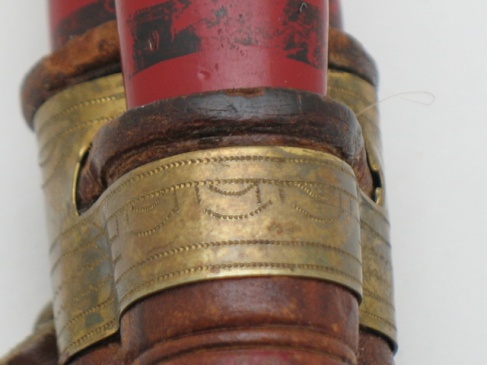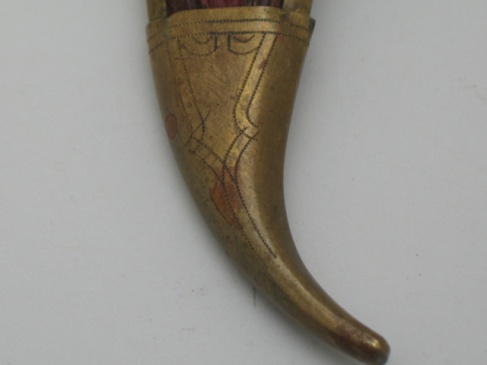I am trying to define and illustrate the various traditional forms of the Finnish puukko and Saku Honkilahti was kind enough to offer some background and information on the Kokemäen. Saku is a puukkoseppa and I’m happy to say I own one of his puukkos with a beautiful stacked birch handle. To see his work please visit his website at: http://www.netikka.net/sakunsivu/ Thank you for all your help Saku!
“The fact of who actually developed or invented the Kokemäenjoki puukko or even when, is unknown. A Kokemäenjoki knife is very simple, functional and straightforward, devoid of decoration. It has always been primarily a tool, not a weapon.
The Kokemäen puukko is typically timber handled, usually curly or flame birch, which has a clear reason. The handle has no ferrules, so the wood itself must be strong and tough. Normal size in a knife handle, a length of all Finnish puukko is typically 100 + mm, the width of a man’s hand. Cross-section is oval and the blade tapers both both forward and backward. Height of the handle is at most 30 mm and a thickness of 20 mm.
The second feature is that the blade tang does not go through, it is called a stick tang. Because the handle must sit very tightly, it is traditionally inserted into the handle by burning, thus it is not drilled.
The third feature is the “gap” between the blade and the handle. One explanation could be that the seam is possible to keep clean. Another explanation of the design is that it allows one to tighten the blade later. The third is that the final grinding is easier. The truth is that no one knows anymore.
The top of the blade is oval-shaped cut. Handles have mainly the oil finishing. The blade is the typical Finnish form of a puukko blade: upright, without a gig in the tip, sharpened straight and and typically a little longer than the 100 to 130 mm handle, and also lower around 15 to 20 mm high. In hand the Kokemäen puukko must feel natural and lively, not clumsy at all.
The Kokemäen sheath is the most spectacular part. In general, it is brown leather and designed with a slightly pointed gig. The upper part of the sheath is long, knives must sit firmly in the sheath. The hanging loop is a simple leather loop or sometimes metal chain.
Here are some notable puukkoseppa who made the Kokemäen:
Akseli Ekman (02.25.1883 – 06.20.1950) was the only professional knife maker who made the Kokemäen puukkos for a living. He was also a shoe maker and well known from his first class quality sheaths. The blades he made mostly from old files. Near his workshop also lived a blacksmith, Peltonen who made the blades for him until they came to a dispute in 1942, when Ekman won a famous knife competition but did not mention his blade smith at all. Ekman’s production was at its peak since the 1920s and even 1940-50, when his puukkos were sold from the local hardware stores etc. They had a very good reputation.
Ilmari Kuula (09.28.1903 – 10.23.1983) made a career as a gurad at the Cedercreutz Art Museum, a job he held for 45 years, vv. 1933 – 1978. Also his brother Aarne Kuula (11.18.1911 – 08.19.1985) made Kokemäen puukkos, mainly by commission and hobby and neither of them made a living making knives.
Keikki Marjanen (10.21.1918 – 01.31.1989) made smaller Kokemäenjoki puukkos, several hundreds of knives. His sheaths usually have his monogram, a stylized letter M. A second feature is the blades are concave ground . His knife handles are usually painted.
Today there are two professional makers: Pekka Tuominen and Mikko Inkeroinen and some hobby makers like me, Jani Ryynänen and Eino Hell.”
Saku Honklahti



















